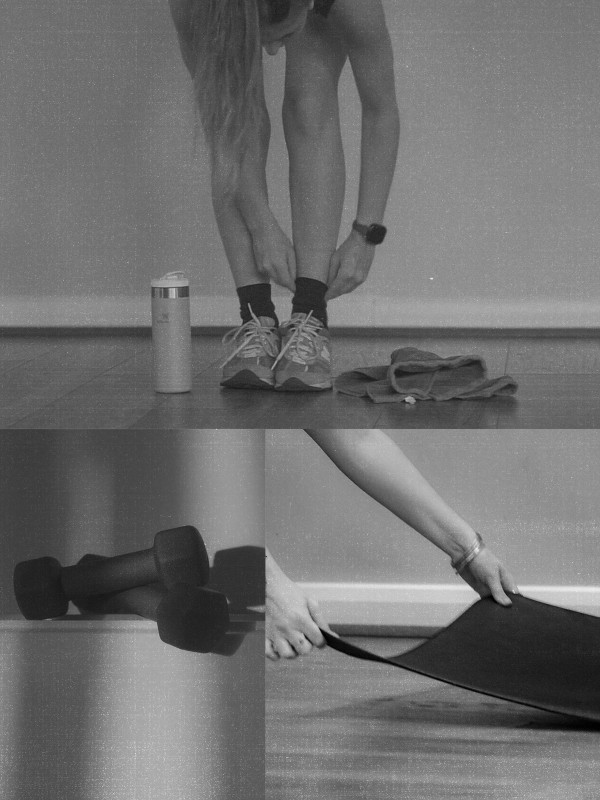A Beginner’s Guide To Intermittent Fasting
Intermittent fasting has become pretty trendy as of late, but it’s something that has actually been around for years – in fact, fasting was practiced way back in ancient history, and many religions include the discipline as part of their religious practices.
But more recently, many people also use fasting as a form of dieting. In general terms, intermittent fasting involves limiting your window to eat to a certain period of time, and abstaining for the rest of the day. Because it restricts your calories and helps to curb sugar cravings, it’s been proved to be an effective weight loss tool, but London nutritionist and personal trainer Sophie Thurner says it’s also good for your digestive health, allowing the gut to regenerate, lower your bad cholesterol and blood pressure to improve cardiovascular health, cognitive brain health and insulin sensitivity, but reducing visceral fat.
If you want to give fasting a try, it’s best to know what each type of fast does and whether it’s appropriate for you as a beginner. We asked Sophie Thurner and Lily Soutter, qualified nutritionist and ‘teatritionist’ for Heath & Heather, for help on deciphering between the most popular diets.
The 16/8 Diet
What is it?
This method involves fasting every day for 14-16 hours, restricting your eating window to 8-10 hours. Also known as the ‘Leangains’ diet, it was popularised by fitness expert Martin Berkhan, and lauded by the likes of Hugh Jackman and Chris Hemsworth. It sounds far more complicated than it is – it can actually be as simple as not eating anything after dinner at 6pm and skipping breakfast. You can drink water, tea, coffee and other no-calorie beverages during your fast too, and this’ll help reduce you hunger levels.
What’s good about it?
“The idea that you can eat whatever you like during the eight-hour time frame is appealing to many,” says Lily. “If your last meal is at 5 or 6pm, you’ll cut out late-night snacking which could otherwise be a big contributing factor to weight gain. It can make you more mindful around eating and good for those who like a structured approach to eating.”
What’s bad about it?
“There is no emphasis on healthy eating, calories or even the quality of the diet during the eight-hour eating window. If using this method of fasting for weight management, it is important to remember that it doesn’t take into account the theory of calories in vs calories out. If over consuming calories during the eight-hour window it will be impossible to shed weight.”
Is it good for beginners?
Sophie says: “16/8 is easier to stick to, and some people even do this naturally – some prefer not to have breakfast. It is also more practicable, for instance, for people that prefer not to food in the morning but like to enjoy a meal with the family in the evening.”
The 5:2 Diet
What is it?
The 5:2 diet lets you eat what you want for five days a week, then eat next to nothing for two. It was big news a few years ago, billed as the diet that allows you to eat all your favourite treats and still lose weight. The technique has been around for years, but after doctor and journalist Michael Mosley presented the diet on a BBC Horizon episode in 2012, it had a renaissance (he published his book, The Fast Diet, in January 2013).
The diet involves restricting your calorie consumption to 25% of your intake for two days a week, and eating normally the rest of the time. The average limit for women is 500 calories for women and 600 for men. That limit allows you to eat small meals up to three times a day.
What’s good about it?
“You only have to fast for two days of the week,” says Lily. “And many people embrace the diet as they can eat the food they typically enjoy for most of the week. Plus, you still consume a limited number of calories on you fast day and with a little research, you can easily find low calories options available to keep you going on fast days.”
What’s bad about it?
“500 calories on a fast day can be a shock to the system and some struggle with irritability, nausea and even difficulty sleeping,” she adds. “Counting calories can be hard and access to low calorie foods when we’re on the go may be difficult. Preparation is critical for diet success.”
Is it good for beginners?
“It can be slightly difficult to adhere to,” says Sophie. “As a complete fast or very low-calorie intake for a whole day or 24 hours can cause headaches, reduced energy levels, anxiety, irritability and mood disturbances, as well as poor sleep.”
The Eat-Stop-Eat Diet
What is it?
Eat-Stop-Eat was coined by Brad Pilon, who came up with the plan while doing graduate research on short-term fasting, which he later wrote a book about.
This diet consists of fasting for 24 hours at a time, twice a week, then eating responsibly for the remaining five days. "You can have three meals per day or 20,” he says. “As long as you are eating responsibly and keeping your overall intake in check, I'm okay with any pattern of meals that works for you.”
This way, you still eat something every day – if you fast from 10am one day to 10am then next day, you can still eat breakfast on both those days.
What’s good about it?
Lily says: “It creates clear boundaries so is good for those who like structure within their diet and could be an easier way to sustain a calorie deficit in comparison to continuous calorie restriction where boredom can be an issue.”
What’s bad about it?
“It may affect your social life,” she counters. “The majority of our social interactions are about enjoying food together. It might also leave you with lower energy levels than normal during the fasting period.”
Is it good for beginners?
Sophie advises: “This is more difficult to stick to – like the 5:2 diet, a complete fast or very low-calorie intake for 24 hours at a time can cause headaches and reduced energy levels, but also poor sleep.”
The Warrior Diet
What is it?
The Warrior Diet was created in 2001 by Ori Hofmekler, a former member of Israeli Special Forces before going into the world of fitness and nutrition. It’s based on the eating patterns of ancient warriors, who ate little during the day and a lot at night. Those following this diet under-eat for 20 hours a day and then consume as much food as they like at night time. During the 20-hour fast, you’re advised to eat small amounts of dairy, eggs, raw fruit and vegetables. After the fast, you can eat whatever you like – but obviously, healthy and unprocessed foods are recommended.
What’s good about it?
Lily says: “It creates clear boundaries so good for those who like structure within their diet.”
What’s bad about it?
Sophie says: “It has been found that eating the bulk of daily calories in the earlier part of the day can have health benefits unrelated to weight loss, such as improved insulin sensitivity and reduced blood pressure. Taking this into consideration, the Warrior Diet, whereby most calories are consumed at night, may not be ideal.”
Is it good for beginners?
“Time-restricted protocols like this are, like the 16/8 diet, it’s easier to stick to, and some people do this naturally,” Sophie advises. “This would be good for people who aren’t keen on breakfast, but love dinner!”
Occasional Meal Skipping
What is it?
If you’re worried about doing a real fast, you can follow something a little less structured to get you in the swing of things. You can simply skip meals from time to time, when you’re not hungry or are busy.
What’s good about it?
“This is a diet that’s easy to sustain and stick to and doesn’t rely on extreme starvation,” says Lily.
What’s bad about it?
“But,” Lily continues, “it could lead to overeating at your next meal. There’s no boundaries or structure with this, so it might be difficult for some to know how many meals are safe to skip. Plus, there’s no real emphasis on healthy eating with this one, or even the quality of the diet.”
Is it good for beginners?
“Occasionally skipping meals is not really a fasting protocol,” says Sophie. “Random meal skipping can be intentional or unplanned, or even not thought about. This is not ideal because irregular meal patterns have been shown to have metabolic disadvantages. For instance, limited data shows that in healthy people a regular meal pattern can lower total and LDL (bad) cholesterol levels, and that it improves blood sugar and insulin stability.”
A big question on a beginner’s lips is whether the technique is safe. Lily says: “While fasting can be safe for the majority, it is important to remember that the research around these diets is still very much in its infancy. These diets are not for everyone, especially if someone is predisposed to or has a history of an eating disorder. For women, a lack of calories could also lead to irregular menstrual cycles, and for others it may affect energy, mood and even sleep.”
Furthermore, Sophie adds that while intermittent fasting has had proven short-term results, we don’t have the sufficient data to determine long-term benefits of intermittent fasting. “In terms of weight loss, it has been shown that weight is regained quickly if fasting is discontinued.”
As Lily says, it can be dangerous for certain types of people, and the Harvard School of Public Health recommend steering clear of the diet if you have diabetes, an eating disorder, using medications that require food intake, pregnant or breastfeeding, or at an active growth stage, such as adolescence.
DISCLAIMER: We endeavour to always credit the correct original source of every image we use. If you think a credit may be incorrect, please contact us at info@sheerluxe.com.






